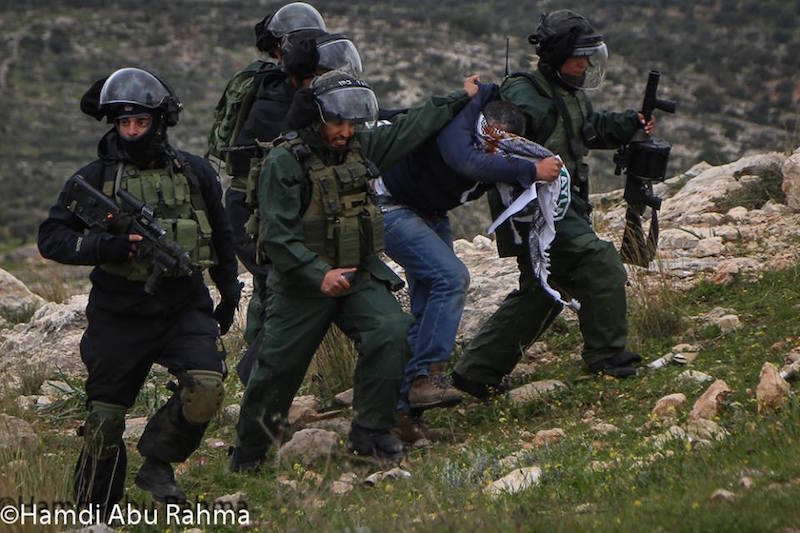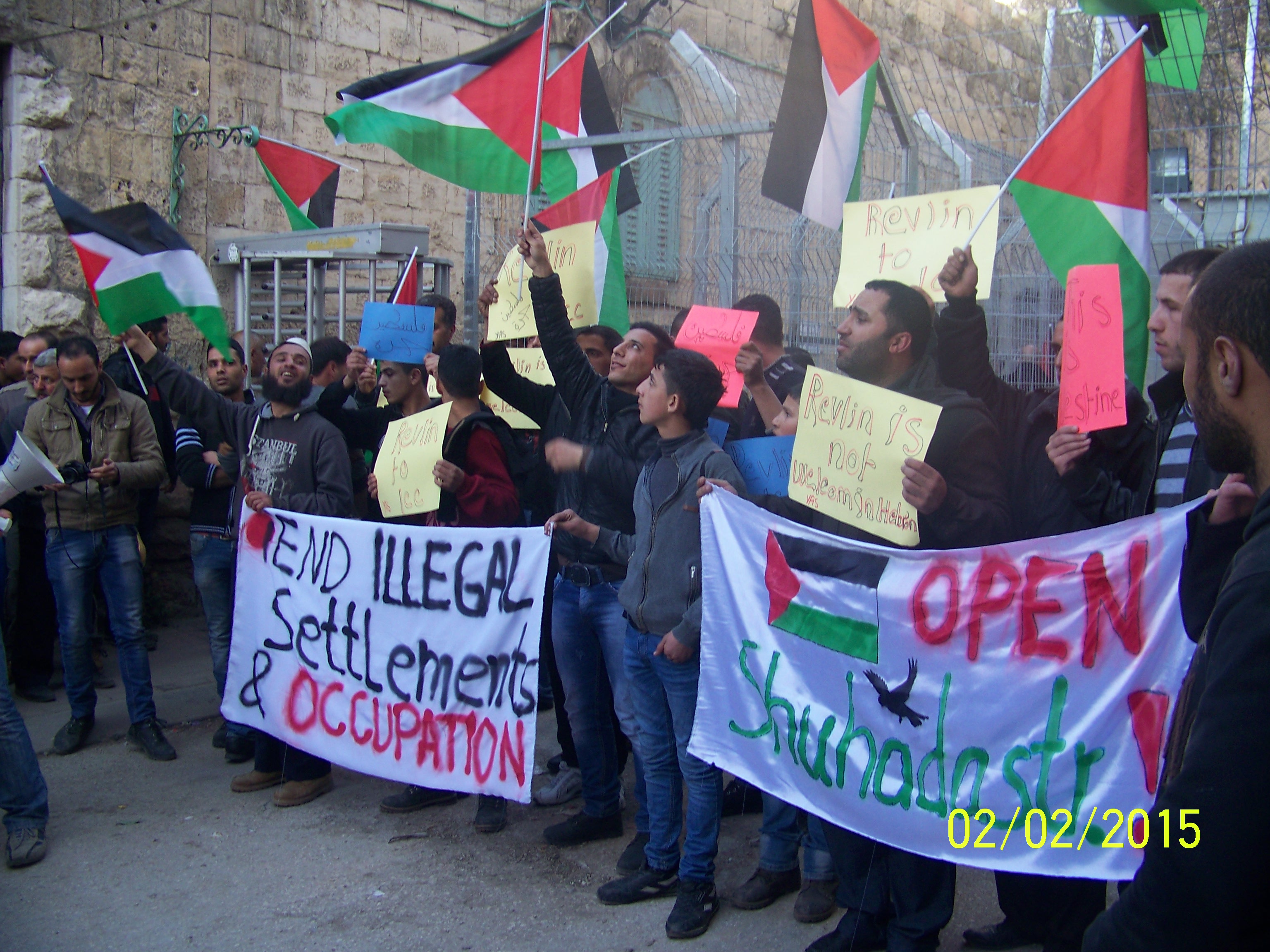Tag: Tear Gas
-
Demonstration in Bil’in honoring slain US citizens faces attacks and arrests by Israeli forces
17 February 2015 | International Solidarity Movement, Ramallah team | Bil’in, Occupied Palestine On Friday 13th February, Israeli forces assaulted the demonstration in Bil’in with hundreds of tear gas rounds, dozens of stun grenades and pepper spray, injuring eleven Palestinian, Israeli and international demonstrators. Member of the Bil’in popular committee Mohammed Khatib and a UK citizen and solidarity…
-
Demonstrators face military violence for protesting Israeli President Rivlin’s visit
5th February 2015 | International Solidarity Movement, Khalil Team | Hebron, Occupied Palestine On Monday, February 2nd, Palestinian demonstrators faced military violence at the hands of Israeli forces in occupied Al-Khalil (Hebron). Protesters gathered in Bab Al-Zawiye, on the H1 (Palestinian administered) side of Shuhada checkpoint, to denounce Israeli president Reuven Rivlin’s visit to the illegal Israeli settlement of…
-
Violence in Ni’lin village: Repression, tear gas and arrests
19th January 2015 | International Solidarity Movement, Ramallah team | Ni’lin, Occupied Palestine The soldiers surrounding Ni’lin did not wait; they began firing tear gas as soon as the villagers walked down into their olive groves. Those who had braved the cold, rainy weather to attend Ni’lin’s weekly Friday demonstration were forced to retreat, running choking from…



